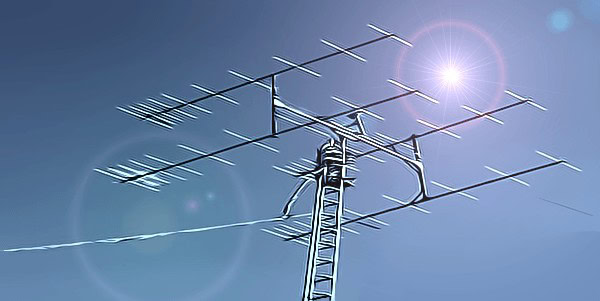The HF (High Frequency) antennas are commonly used for the transmission of electromagnetic waves with a frequency range between 3 and 30 megahertz (MHz). These antennas are mainly used for TV signals and radio signals.
To get a perfectly functioning HF antenna, we have to ensure a 3dB gain. But in reality, it is not possible due to different types of signal losses and atmosphere shifting.
So, to get a gain of approximately 3dB, the stacking of HF antennas is done. To do so, we have to properly know the steps of how to stack Vertical HF Antennas.

The meaning of stacking the antenna is to combine two or more antennas to get a strong signal with the same effort. For this, a big area is required to set the antennas for stacking to reduce any sort of disturbance in the signal.
Besides, improving gain isn’t the only reason for stacking. It is also done to improve signal pickups, amplification of signals, and to reduce signal fading as well.
You can also read: How To Install A Ring Doorbell
Types of Stacking
The stacking of the antenna is mainly done in two ways. These are:
- Vertical Stacking
- Horizontal Stacking
The vertical stacking mainly impacts on the overall gain to increase it. On the other hand, horizontal stacking mainly improves the signal quality and doesn’t change the overall gain. A brief description of both types of stacking is given below:
Vertical Stacking:
In this method of stacking, one antenna is placed above the other in a vertical direction. Here, one antenna is used to receive in-phase signals and the other is used to receive out-phase signals. And if the antennas are properly placed, there will be a minimum signal disturbance. The Vertical HF antennas are mainly used:
- To solve the problem of signal fading.
- To increase the overall gain.
- And to improve signal pickups of the antennas.
How to setup Vertical Stacking:
- The antennas should be identical.
- The two antennas are placed at different heights vertically. The bottom antenna will be fixed and the upper one should be moveable in a rotational way to get signals perfectly.
- The antennas are connected closely to matching transformers to get similar in-phase and out-phase signals.
- A hybrid splitter is installed in the middle of both antennas to get equally distributed input and output signals. It ensures zero loss of any signals and thus minimizes the fading of signals.
- The placement of the antennas should be two-thirds so that the perfect amplification of the signals is gained.
- The lead wires, matching transformers, and stacking bars must be identical to get an equal distribution of signals. The lengths of the cable must be of similar lengths between the matching transformer and hybrid splitter.
Then rotating the upper antenna and adjusting the heights between antennas, the perfect signal pickup is achieved with an approximately 3dB increase of gain. Vertical HF Antennas
- Note that, due to the atmosphere shifting, the reflections of the incoming signals are distorted and thus it gets faded resulting in loss and noise in the signals. Vertical stacking plays a great role in removing such disturbances in the signals.
Horizontal Stacking:
The installation of horizontal stacking is much easier and cheaper than vertical stacking. In this method of stacking, the antennas are placed sideways that is, next to each other. The horizontal stacking doesn’t impact the overall gain, rather plays a great role in the purification of signals and omitting unwanted signals. The main reasons for using this method of stacking:
- The rejection of ghost signals.
- To reduce all types of disturbing and noisy interferences.
- To reject any unwanted signals.
How to setup Horizontal Stacking:
- Both the identical antennas are placed next to each other and similar lengths of cables, hybrid splitter, and matching transformers must be used.
- Both the antennas must be placed pointing to the transmitter.
- Vary the distance between the antennas slowly to get the perfect sharp and noise-free signal. In this case, one must watch the signal to identify the perfect location of the antennas.
- Fix the location where the signal gains a sharp and stable form.
- The signal still may have a slight noise and disturbance which can be fixed by moving one of the antennas up and down to make the signals equal.
Finally, the installation of horizontal stacking is done which can make your transmission free of unwanted signals and other disturbances. Vertical HF Antennas
Final Judgment
Among vertical and horizontal stacking, the vertical method is much more preferable to me. This is because:
- The mechanical and installation problems in the vertical method can be easily solved.
- The gain is increased in this method which results in a sharp, perfect, and clear signal in any weather.
Would you like to read more about Vertical HF Antennas-related articles? If so, we invite you to take a look at our other tech topics before you leave!










